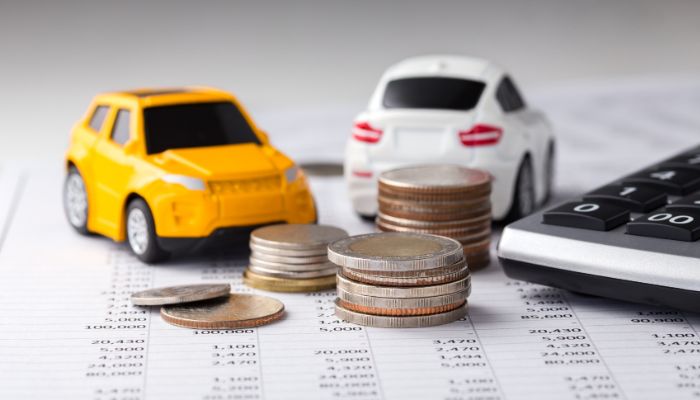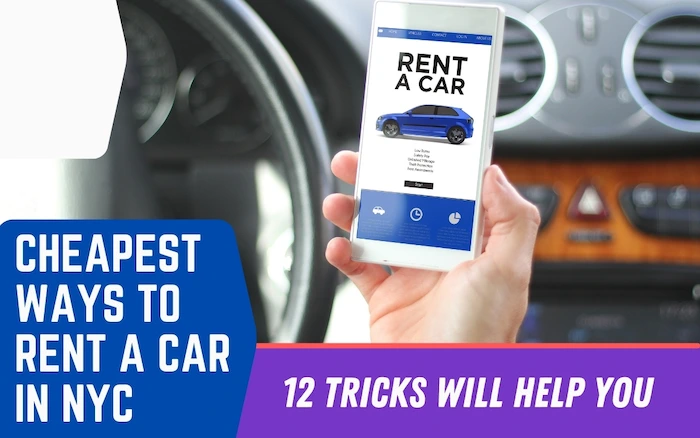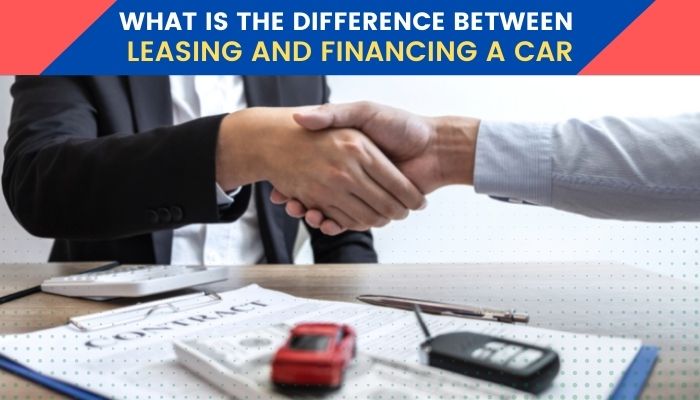How To Trading In A Leased Car For A New Lease?
Leasing a car is an affordable way to drive the latest model without worrying about the long term aspect of your car. Most lease deals last between two and four years, but you can find deals that run for up to seven years. Unfortunately, anything can happen during the cause of the contract.
You can fall out of love with the automobile or you can find a better deal. In such a situation, you could be left with no other option other than trading in a leased car for a new lease or turning in a leased car early. Both methods will help you get rid of the car, but the feasibility will depend on your contract situation.
The Basics You Should Know Before You Can Trading in a Leased Car For a New Lease
Leasing a car does not give you ownership, especially if you had negotiated the terms of the lease before putting pen to paper. You are most likely to build ownership equity if you had made a very large down payment, the dealership made a mistake in estimations, or if you had a valuable trade-in at the start of the lease.
You can trade in a leased car for a new lease if you see a difference in the residual value. In most situations, the lease payments do not match the ever-increasing depreciated value of the car, resulting in an upside-down situation. An upside situation is when the actual market value of the automobile is less than the purchase option or residual value.
In an upside-down situation, trading in a lease early does not offer you any benefit, as you do not have any equity. The exception to a luxury car lease is when the early payoff amount or the total of the remaining payments is less than the trade-in value or market value of your model.
Alternatively, if you had given a large down payment or traded a vehicle with a greater trade-in credit, you could have positive equity that you can turn into a trade-in credit for your new car. Trading in a leased car for a new lease also makes sense if the finance company under-estimated the lease-end value of your vehicle, resulting in higher monthly payments.
Important Lease Terms You Should Know Before Tading in Your Car
- Residual value – It is the vehicle’s estimated value at the end of your lease term. A big chunk of your lease payments goes towards depreciation. The depreciation value depends on the brand, durability, quality, age, and mileage. It is the amount the car is worth at the end of your contract.
- Market value – The residual value is not necessarily the market value. The market can influence your car’s worth at the end of the lease agreement, which can be higher or lower. For example, an increase in gas prices can increase the market value of electric and hybrid cars. Furthermore, the market value can be higher if the automobile has less mileage than indicated on the lease term. However, you should not forget about things that can lower the market price. Any damage will lower the market value of your car.
- Buyout price – The amount is the figure you should pay to purchase your leased car. The buyout price is usually equal to the residual value in most lease contracts. The value is fixed once you sign the contract.
- Equity – The figure is the difference between the value of the car and the residual value. Positive equity is when the value is greater than the buyout price. Negative equity is when the value is less than the buyout price. Trading in a leased car for a new lease is a good option when you have positive equity.
How To Trade in a Leased Car For a New Lease
1. Check for equity
As your lease agreement comes to an end, you should keep a close watch on the value. If the price is higher than the buyout, you have equity that you can take advantage of by trading in a lease early. With equity, you can trade in the vehicle for a new unit or sell it to the dealership for a profit. If the car is worth more than your buyout price, you can quickly get yourself a new lease.
However, you may also need to factor in any early termination fees. If the car is worth less than the residual price, trading your car will not put you at an advantage. You can look for car lease takeover deals that may offer you better value than trading in your car. You should never trade in a leased car for a new lease without first looking at whether you have equity.
2. Consider your options
Your options will depend on whether you have positive or negative equity. With positive equity, you can choose to:
- Sell your leased car to a dealership – If you do not have immediate plans to get a new car, you can choose to sell the car to a dealership. The dealership can help you work with the lease company and pay you the difference between the buyout price and the trade-in value. Selling a car to a dealership is ideal if you want to redeem equity for a check.
- Trade-in for a new lease – You can use your equity as a down payment or pay for taxes and fees. It can also help you build equity with your next buy. Trading in a leased car for a new lease can further enable you to lower your monthly payment. Trading in your vehicle can help you access bonus cash incentives. You do not have to take your car to your dealer. You can use a different dealership under the same brand if they offer better value.
- Buy your leased car and sell it – If the market value is more than what you are getting with your dealership, you can buy out your leased car. You need to learn how to buy your leased car to ensure that getting a better value. You can use cash or seek an auto loan to cover the expenses. Selling the automobile yourself will help you fetch better rates, but it can take time.
- Swap your lease – Lease contracts make it possible to transfer the remainder of your lease period to another person. You only need to find a person in leasing your car model and assume the remaining payments. You can always start with your family and friends. Alternatively, you can list your lease offer at lease trading sites to find people interested in your leased car.
Why Trade in a Leased Car For a New Lease?
It is straightforward
The process is quick and easy. You only need to visit your local dealership to trade-in your car and lease a new vehicle. The dealership will deal with all the paperwork, making the process less tiresome.
All transactions happen in one place
Unlike when selling the leased car yourself, you do not have to worry about talking to different people or even visiting different places. You can complete the transaction at one place in one seating with one sales agent, eliminating inconveniences that might occur when dealing with different people.
The dealership pays off your existing loan
The dealership can choose to continue paying off the remaining loan balance and obtain the title from the lender. Your positive equity will act as a down payment, enabling you to get the lease at lower monthly payments. You can also easily trade-in your leased automobile even with negative equity.
You can save on taxes
Trading in a leased car at a dealership can help you save money on the sales tax. Some states allow a trade-in value to be deducted from your new car’s price, reducing the sales tax you should pay for the car. You should always determine whether the tax savings will offset the price you would earn by selling the car yourself.
The dealership takes care of all paperwork
Selling a car in a different state from where it was registered can complicate the process. Trading in the vehicle at a dealership eliminates the difficulties as they will take care of all paperwork. You only need to sign the documents and pay a processing fee if any to get rid of the automobile.
Why Trading in Your Lease Car May Not be a Good Idea?
You will not get the best value
Trading in your leased automobile is convenient, but it does not always give you the best value from your used car. You are likely to get more money when you sell your car to a private party. Dealerships offer wholesale values to enable them to resale the vehicle at a higher price for profit.
Nevertheless, you can clean your car and maintain it before taking it to a dealership to help you fetch better rates. The dealership takes into consideration several factors such as condition, mileage, brand, and age to determine the value of your used car. Taking good care of your car during the lease deal can help you fetch a better price for your automobile.
It complicates the deal
The deal has a few components that can be confusing to some buyers. You will need to keep track of the car price, trade-in allowance, and lease terms. The sales agent can add to the confusion by blending all the terms into one package and sell you the monthly payments.
Adding a new lease deal to the trade-in transaction can make the process more difficult to understand due to the multiple numbers and terms floating around the conversation.
Conclusion
You do not have to get stuck with your lease deal until the end. If you are unhappy with your car, you can always choose to trade in a leased car for a new lease. However, you will need to consider the costs and equity before making your decision. Trading in a lease early is a good option if you have positive equity.
Frequently Asked Questions (FAQ)
How long do you have to wait to trade in a leased car?
There is no specific period you should wait before choosing to trade in your leased car. Instead, you have to look at when you are at an advantage. The best time to trade in a leased vehicle is when you have equity. Trading your car at the end of your lease deal is usually the best. You should avoid trading in your car in the early days of your lease as you will have to pay more for depreciation.
Can you upgrade your leased vehicle?
Yes. You can easily upgrade your lease car by talking to your dealership. However, you will need to consider the costs that you will need to pay to upgrade your vehicle.
Will a dealership take over my lease?
Yes. A dealership can choose to take over your lease if it favors the company. When you trade-in our vehicle, a dealership can take over your payments and wait for the lease to end.
Can you negotiate the buyout price of a leased car?
Yes. You can negotiate the buyout price before signing the agreement. Once you sign the contract, the buyout price cannot be negotiated.
Can I return a leased car within 30 days?
It depends on what is on your small print. Some dealerships have a short period where you can return the automobile without a penalty.




